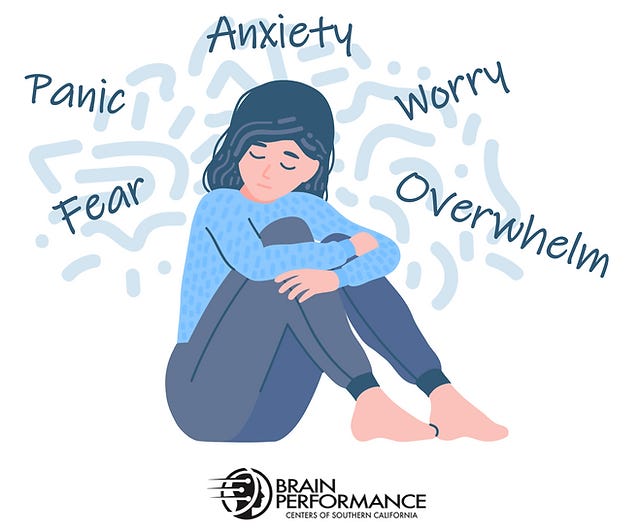The Effects of Anxiety on a Young Mind
Written by Aarushi Rai
Many teenagers suffer from anxiety, both diagnosed and undiagnosed. They also often hear techniques about how to quell anxiety, but what causes it? How does it affect the adolescent brain? What is the science behind it?
Eight percent of children and teenagers experience an anxiety disorder, and for teens especially, the anxiety can persist since childhood, making it more prolonged and severe. The effects of anxiety aren’t uniform, though. It can vary from symptoms like constant worrying about everyday things, behavioral changes like nervousness and irritability, feeling easily fatigued, and more. Along with this, physical symptoms like issues with sleep, headaches and digestive issues, and chronic pain that can lead to more extreme issues like heart disease are common. For most adolescents with anxiety, symptoms can go away on their own and don’t last, but for some, the anxiety can persist and get worse over time to the extent that they cannot function properly because of it.
Along with these, anxiety can cause serious mental health issues for teenagers. One common example is depression. Many teens have depression and anxiety co-occurring (meaning they don’t stem from one another), but others can have anxiety that causes depression. An anxious, stressed lifestyle can lead to depression as it can cause adolescents to withdraw from life, isolate, and become depressed. A more specific example is Generalized Anxiety Disorder (GAD), which is when anxiety isn’t caused by something particular but is triggered by continuous and unrestricted worry about many regular things. Some signs of anxiety make it easier to recognize within teenagers, though. Things like recurring fears about school and relationships, routine parts of everyday life, changes in behavior from the norm, avoidance of things like school, sleep issues, risky behaviors, and more can be signs of anxiety.
Next, it is important to recognize what are the most common stressors that cause anxiety in teenagers. The adolescent brain is growing and changing and goes through many struggles with school and social interactions. Teenagers often struggle with how they are perceived and their body image, their academic performance due to high pressure in schools today, and in general a scary world that they are about to be a part of. These can all affect a teen’s confidence, self-esteem, and in general self-esteem. A specific example of a type of anxiety caused by the school is test anxiety, which is a type of performance anxiety (a feeling a person may get when their performance is important in a situation or have significant pressure to do well in something). A similar example is with school refusal when adolescents actively avoid school and activities because of various reasons stemming from feeling anxiety in school situations.
Eighty percent of kids who have a diagnosable anxiety disorder aren’t getting treatment even though anxiety disorders are highly treatable, so it is important to recognize symptoms and get help if necessary. The most effective treatment for anxiety in teenagers is a mix of cognitive behavioral therapy (CBT - gives strategies for coping thinking and reacting differently to anxiety, gradually increasing exposure to a stressor, tolerating anxiety, and more) and antidepressants. Most commonly, SSRIs (Selective Serotonin Reuptake Inhibitors) are the medications recommended for treating anxiety disorders. CBT and antidepressants together can gradually diminish anxiety over time.
References
Anxiety and stress in teens. (2024, May 22). Johns Hopkins Medicine. https://www.hopkinsmedicine.org/health/conditions-and-diseases/anxiety-disorders/anxiety-and-stress-in-teens#:~:text=What%20are%20the%20signs%2Fsymptoms,%2C%20headaches%2C%20stomachaches%20and%20pain
Miller, C. (2023b, January 5). How anxiety affects teenagers. Child Mind Institute. https://childmind.org/article/signs-of-anxiety-in-teenagers/
Anxiety in Teens is Rising: What’s Going On? (n.d.). HealthyChildren.org. https://www.healthychildren.org/English/health-issues/conditions/emotional-problems/Pages/Anxiety-Disorders.aspx
Written by Aarushi Rai from MEDILOQUY


